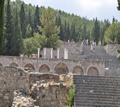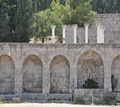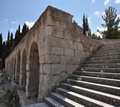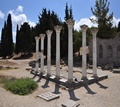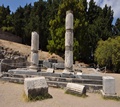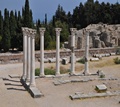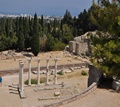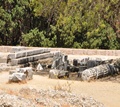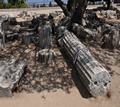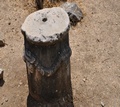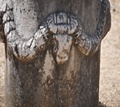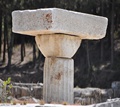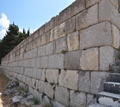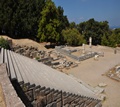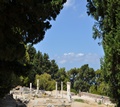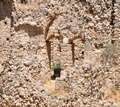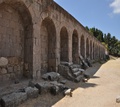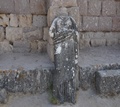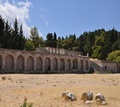
Asklipieio is located 3.5 km southwest of Kos, in the area of Panagia Tarsou, built on the slopes of a low hill with a wonderful view of the Asia Minor coast. The choice of venue was very successful in meeting the mental recovery of the patients.
The research to locate Asklepiio from archaeological evidence and local narratives began at the end of the 19th century, but the sanctuary was revealed at the beginning of the 20th century. In addition to the scattered architectural members, the proximity to springs that would have supplied the sanctuary with the necessary water in ancient times contributed significantly to its identification.
The sacred space, where Hippocrates, one of the most important representatives of medical science in ancient times, systematically applied the science of medicine, in contrast to the sanctuary of Asclepius in Epidaurus, where the traditional treatment, based on miraculous intervention, was followed of the god, who appeared in the dreams of the sick and indicated their cure when they fell asleep in a special area of the sanctuary.
The Asclepius flourished during the Hellenistic and Roman periods as a place of rest and healing. The treating physicians of Asclepius were also priests of Asclepius. In the 2nd century BC the fame of the sanctuary and the medical school that Hippocrates had founded there had spread throughout Greece. This is how the immunity of the sanctuary was established (that is, the protection of the sanctuary from war or other hostile actions) and the establishment of the Great Asklepiion (a five-yearly festival with musical and nudist competitions, in which all Greek cities participated).
The earliest use of the site dates back to the Mycenaean and Geometric eras, as evidenced by finds that come mainly from tombs. In the following centuries in the area there was worship of the healing demon Paion, and of the god Apollo, father of Asclepius. Apollo, in fact, bore the name Kyparissios, because of the sacred grove of cypress trees that surrounded the mosque and which was protected by sacred law. Other gods of the Koos were also worshiped in the area, such as Zeus Ikesios, Zeus Patroos, Zeus Michaneus, Athena Phratria, Apollo Karneios and the Fates, while in the 4th c. BC, at the time of the founding of the city of Kos-Meropeia, the cult of Asclepius was added, which emerged as one of the most important public cults of Kos during the 3rd and 2nd centuries BC.
Then the sanctuary was designed and developed as a single complex of buildings for the purpose of worshiping Asclepius and gradually expanded to three halls. The center of worship was originally an altar from the middle of the 4th century BC, in the middle man. At the beginning of the 3rd c. BC the gallery of the lower hall was shaped, an Ionic temple dedicated to Asclepius was built and an altar for the repose of the faithful in the middle hall, while a higher, third hall was also created.
The sanctuary experienced great prosperity in the Hellenistic and Roman times and gained pan-Hellenic fame, especially after 242 BC. At the beginning of the 2nd c. BC the Asclepius was placed under the protection of King Eumenes II of Pergamum and then acquired its current monumental appearance. A larger, imposing central staircase was built, leading to the upper hall, in the center of which was built a large Doric temple dedicated to Asclepius, a copy of the Epidaurus temple. In the same period, Doric arcades with rooms for the patients were built on the three sides of the hall, replacing the older wooden galleries, the old altar of Asclepius was reconstructed in the middle hall, in the style of the altar of Zeus of Pergamum, while in the lower hall the monumental entrance-propyla to the sanctuary.
In the 1st century m.X. the toilets, the so-called Vespasians, a large thermal complex, the temple dedicated to Asclepius, Hygeia and Ipione, and a library were built. The thermal baths and the water supply were donated by the famous Greek physician Gaius Stertinius Xenophon, who lived in Rome and was the personal physician of the emperors Tiberius, Claudius and Nero, while the temple and the library were his own donations. At the time of the Antonines, the 2nd c. A.D. the Corinthian temple of Apollo was built, while in the 3rd c. m.X. added thermae on the east side of the lower manor. The site continued to function until late antiquity, as indicated by a hoard of coins from the 4th c. A.D. and was abandoned after the earthquakes that occurred in 469 and 554 AD
Editor: Fotini Anastasopoulou










